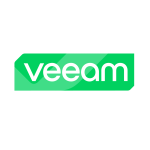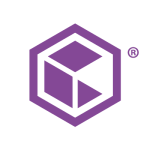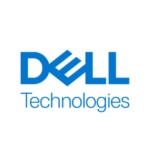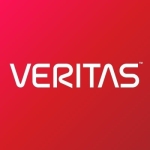What is our primary use case?
We use Zerto for multiple use cases. We are using it for disaster recovery, backup and recovery, and data protection. There is an inbuilt feature where we can utilize the Zerto platform in a hybrid model which means we have one instance on-premises and another instance on our cloud for redundancy and for cross integration.
How has it helped my organization?
Zerto’s near-synchronous replication works. We have configured near-synchronous replication between two different clusters. One cluster is on-premises, and another cluster is on the cloud. For near-synchronous replication, the value proposition is excellent. We are able to achieve the results for which we procured this solution. Near-synchronous replication is working perfectly. We do not see any challenges with data retrieval, complete replication, and synchronization processes. Everything is working perfectly and seamlessly.
We were able to see its benefits when we integrated it with our HPE GreenLake for DR purposes. It is a SaaS-based platform, so we are able to see the fastest way to recover data and applications. We were perfectly able to meet our recovery point and recovery times objectives through Zerto. On top of that, Zerto is protecting our data from ransomware, cyberattacks, cyber threats, national disasters, or human errors.
We are using a lot of virtual machines on-premises and in the cloud. Our main goal is to protect the complete data that we have in production and non-production clusters with different applications and big platforms.
Zerto is a market leader in continuous data protection technology. Previously, we had RPOs and RTOs in terms of minutes, whereas now, they have changed from minutes to seconds.
Zerto has an inbuilt disaster recovery protection and prevention with continuous replication. Whenever we faced any challenge related to our link being broken or not being able to access the data from the primary data center, all the backups were readily available because Zerto had replicated snapshots. We have not seen much latency or delay in recovery and the ability to get replicated data from different destinations.
We have not had any ransomware type of event. However, during the PoC and testing in an isolated environment, we have seen what would happen in the case of an attack. We could see how Zerto and its policies will take action and isolate that environment within a fraction of a minute or second.
For DR, we were previously using VMware Site Recovery Manager (SRM) but there was a lot of complexity. It was time-consuming. Most of the time, we saw a lot of human errors happening, and we were not able to test our DR activity. By leveraging Zerto for the past 14 or 15 months, we could achieve all of our desired results. There were no human errors. Everything went seamlessly. We are very happy with this solution.
Zerto has had a positive effect on our IT resiliency strategy. With the earlier vendor, we had a lot of problems. Our data got lost in transit during replication, snapshot creation, and recovery scenarios. By using this robust platform, we could achieve our resiliency metrics. The metrics are stable and never went below the benchmark.
Things are working perfectly. Each and every feature is complete with advanced options. It is a simplified DR operation platform. It has great visibility when it comes to protection from ransomware attacks. It has deep analytics features and robust data recovery policies. Everything is good in this platform.
What is most valuable?
The most valuable feature is the resiliency towards cyber threats for data protection. The main reasons for adopting Zerto are data protection and being able to do disaster recovery for site recovery. We can ensure that if the site goes down, data is available to all the users within a fraction of a second. On top of these, we have the resiliency towards malware and other security threats and attacks. Zerto has an embedded feature to protect our data from external and internal threats.
Zerto is very easy to use. It is very user-friendly. It is a GUI-based platform with a centralized dashboard where we can create policies, snapshots, replication policies, and disaster recovery policies. It is very user-friendly.
What needs improvement?
Patch management can be better. Although we are doing patch management on the Zerto platform in an automated manner, it can be improved by leveraging some AI-assisted technology. With the help of AI, things are going to be faster in terms of patching the solution.
Buyer's Guide
HPE Zerto Software
October 2025
Learn what your peers think about HPE Zerto Software. Get advice and tips from experienced pros sharing their opinions. Updated: October 2025.
872,655 professionals have used our research since 2012.
For how long have I used the solution?
We have been using Zerto for 14 or 15 months.
What do I think about the stability of the solution?
Since we deployed it, there have been no critical issues or major incidents. The platform is working as per the expectations. There was no downtime of any production activity. We are happy with the stability and overall performance of the complete platform.
What do I think about the scalability of the solution?
It is completely scalable in terms of adding licenses, subscriptions, modules, and different sorts of features. Its scalability is seamless, and it is easy to use.
How are customer service and support?
I have contacted them multiple times. Their support was good. We got a timely response and a timely resolution.
How would you rate customer service and support?
Which solution did I use previously and why did I switch?
We were using VMware SRM previously. We switched from VMware SRM to Zerto due to complexity, cost, human errors, and data protection.
The most important security feature in Zerto is protection against ransomware attacks and internal or external threats. These capabilities were not present in the VMware platform. Cybersecurity resiliency and protection are embedded in Zerto.
Zerto is very easy to use, operate, and administer. It is very simple and easy to create and work on any of the policies and rules. It is easy to extract reports and navigate to the other tabs where we can see the health scorecard and other things. We can see all the things. It is very easy to patch the entire system. Everything is good.
How was the initial setup?
We have a hybrid deployment. We have one instance of Zerto disaster recovery and protection running in an on-premises data center, and then we have another instance running on the cloud. Both are continuously replicated so that in case of any difficulty or problem with one, we can leverage the functionality of the other one. The on-premises one is taking care of the on-premises environment, and the cloud-based instance is taking care of the cloud-based environment.
Its initial deployment was very easy and flexible. We did not face any challenges. The solution is quite simple. It is easy to navigate, easy to use, and easy to migrate, although we did not go with any sort of migration. It was a fresh greenfield deployment, so we had no issues at all.
Its implementation took us about 12 weeks. It does require maintenance. The maintenance contract was already placed when we went with the purchase order for procurement. It was a multi-year support contract. It does require maintenance in terms of patch management, updates, health checks, performance tuning, policy updates, and recovery plans and procedures updates. We have a storage and backup team working 24/7 in this environment.
What about the implementation team?
We directly worked with a Zerto system integrator. That integrator was recommended by Zerto. We also worked with the Zerto team for the complete architecture, framework design, implementation plan, and other things. We did not take any help from any third-party vendor or resource.
We had five to seven people for its implementation.
What's my experience with pricing, setup cost, and licensing?
Its pricing is very competitive. As compared to VMware SRM, Zerto has reduced our OPEX cost by at least 30%.
What other advice do I have?
I would rate Zerto a ten out of ten as a platform. With the help of Zerto, we have very enriched features for ransomware protection of all our data repositories. It provides great support for disaster recovery and response. Our RTOs have improved after adopting the Zerto platform, so everything is good.
Disclosure: PeerSpot contacted the reviewer to collect the review and to validate authenticity. The reviewer was referred by the vendor, but the review is not subject to editing or approval by the vendor.



















